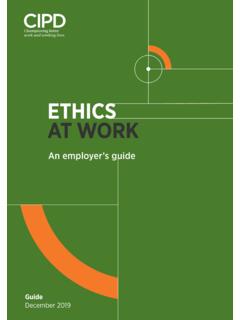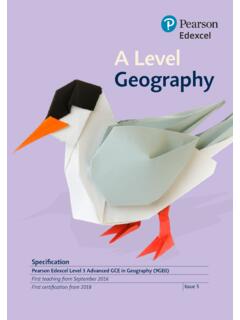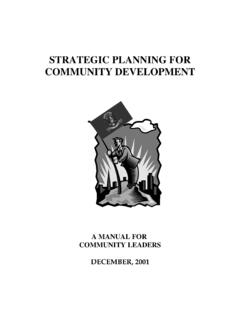Transcription of ENVIRONMENTAL SUSTAINABILITY PLAN
1 ENVIRONMENTAL SUSTAINABILITY PLAN2019-21 UNSW acknowledges and pays respect to the traditional owners where University campuses stand at Kensington (the Bedegal people of the Eora Nation), Paddington and Coogee (the Gadigal People of the Eora Nation) and Canberra (the Ngunnawal peoples).Our Kensington campus is located near an 8000-year-old campsite around which the people of the area taught culture, history and subsistence. From an age-old past through to the present the site holds significance as a place for gathering, meeting, teaching and is committed to honouring Australian Aboriginal and Torres Strait Islander peoples unique relationships to the land, waters and seas and their rich contribution to the President and Vice-Chancellor.
2 02 ENVIRONMENTAL SUSTAINABILITY at UNSW ..03 Campus SUSTAINABILITY in action ..04 Developing the ENVIRONMENTAL SUSTAINABILITY Plan ..05 The ESP at a glance ..06 Achieving the Global Goals ..07 Focus areas08a. climate Action08b. Buildings & Campus09c. Energy & Water Efficiency10d. Waste & Recycling11e. Travel & Transport12f. Goods & Services 13g. Investments14h. Engagement & Integration15i. Learning & Teaching16j. Research & Advocacy17 Governance & reporting ..18 Roles & responsibilities ..19 Relevant standards & frameworks ..21 ENVIRONMENTAL SUSTAINABILITY Plan 2019-21 2 Our planet faces a series of complex ENVIRONMENTAL challenges, from pollution of land and oceans to biodiversity loss and climate report published in 2018 by the UN Intergovernmental Panel on climate change warned that the global community had only until 2030 to bring about the unprecedented transformation that is required to limit global warming to a maximum of C.
3 A recent UN report has warned that over the coming decades, human activity will put more than one million plant and animal species at risk of extinction. Our planet is under extreme pressure and it is time that public and corporate institutions including universities take action that matches the scale of the has a long history of ENVIRONMENTAL stewardship through education, and as leaders in research fields from advanced recycling and climate science to renewable energy and storage. About 50% of the solar panels sold world-wide today use UNSW-designed technology, and our alumni are at the forefront of the photovoltaics and energy transition are also a major investor, consumer and land holder, and our campuses form part of the daily lives of some 62,000 students and more than 6,700 staff.
4 In many ways we are like a small city, and so it is right that we grow and invest like any sustainable city would, with a responsible and clear introducing our first Environment Policy in 1995, UNSW has shown that major change is possible: our landmark rainwater capture system sees more than 90% of campus stormwater injected into the local aquifer and used to reduce our mains water usage; our solar power purchase agreement will see our campus powered by 100% renewable electricity from 2020 a first for an Australian university; and improvements to waste management practices saw 90% of our waste diverted from landfill in ENVIRONMENTAL SUSTAINABILITY Plan 2019-2021 will see us build on, embed and deepen our activities over the next three include increasing our onsite solar energy generation, reducing our total emissions in line with a C global warming scenario as set out on the Paris Agreement, and becoming a leader by improving our approach to responsible investing.
5 Through a process of de-carbonising our relevant financial investments in a way that keeps our portfolio emissions intensity within the Paris Plan will enable us to realise the bold ambition set out in UNSW s 2025 Strategy a vision of a sustainable campus where we undertake teaching and research in areas critical to the future of our UNSW will show leadership where we can, so must political and business leaders, and individuals. A collective approach to this crisis is imperative if we are to undo or abate some of the catastrophic ENVIRONMENTAL damage that has already been invite all students, staff and members of the broader UNSW community to take ownership of this Plan, and treat what is the greatest moral challenge of our time with the seriousness it Ian JacobsPresident and Vice-ChancellorFROM THE PRESIDENT AND VICE-CHANCELLORENVIRONMENTAL SUSTAINABILITY AT UNSWOur vision is to be a catalyst for an environmentally sustainable future through excellence in research, teaching and campus Sydney is an education and research-intensive university.
6 Delivering outstanding teaching alongside cutting-edge research. Established in 1949 and with campuses in Sydney and Canberra, UNSW has a unique focus on the scientific, technological and professional disciplines. ENVIRONMENTAL SUSTAINABILITY is a key element of our 2025 Strategy. Through this, we have made it our mission to become the first university in Australia to commit to having 100% of its electricity supplied by photovoltaic solar students and staff are actively engaged in ENVIRONMENTAL and social issues. We recognise that we are uniquely positioned to contribute to solving global ENVIRONMENTAL challenges through teaching, research, thought leadership and demonstrating leading practices on our is committed to continuously improving ENVIRONMENTAL performance across University operations from the way we plan, construct, operate and power our buildings, reduce and manage waste, make purchasing decisions and travel to and around our campuses.
7 Through our learning and teaching programs we educate students about ENVIRONMENTAL issues and equip them to understand and solve global challenges. Our contribution to a sustainable world is underpinned by our strong research focus helping to tackle ENVIRONMENTAL challenges such as climate SUSTAINABILITY Plan 2019-21 3 ENVIRONMENTAL SUSTAINABILITY Plan 2019-21 4 UNSW has a history of ENVIRONMENTAL stewardship across research, learning & teaching and campus operations across several decades. The ENVIRONMENTAL SUSTAINABILITY Plan (ESP) will build on past achievements, while raising our ambition levels to meet the ENVIRONMENTAL challenges of today. Highlights during 2018 included: REDUCED MAINS WATER USEUNSW s Kensington campus has reduced mains water use by progressively transitioning to bore water, which represented 44% of total water use in 2018.
8 EXPANSION OF RAINWATER CAPTURE SYSTEMOur rainwater capture system was expanded and now drains rainwater from 90% of the campus, replenishing the Botany Sands Aquifer (the source of our bore water).SOLAR POWER PURCHASE AGREEMENTA nnounced a 15-year solar photovoltaic Power Purchase Agreement (PPA) that will provide UNSW with 100% renewable electricity by LANDFILL DIVERSION Comingled general waste is responsibly sorted off-site, with more than 90% diverted from landfill in 2018 for recycling, composting and waste-to-energy. FIRST RETURN AND EARN MACHINE FOR A UNIVERSITY A new Return and Earn reverse vending machine the first for a NSW educational institution allowed more than million containers to be FACILITIES FOR CYCLISTS 104 new bicycle spaces plus six repair stations and pumps were added in 2018, bringing the total to around 900 SUSTAINABILITY IN ACTION UNSW is a world leader in research and innovation.
9 It has a responsibility to act on the overwhelming evidence for climate change . UNSW ENVIRONMENTAL SUSTAINABILITY Survey 2018 UNSW s ENVIRONMENTAL SUSTAINABILITY program is coordinated by the SUSTAINABILITY unit within Estate Management. The ENVIRONMENTAL SUSTAINABILITY Plan was developed during 2018 through: an internal review of current UNSW ENVIRONMENTAL SUSTAINABILITY performance trends and practices benchmarking of UNSW performance and practices with leading Australian and international peer organisations consultation with more than 350 stakeholders, including students, professional and academic staff, university leadership and government representatives through surveys, interviews and forums an assessment of our material ENVIRONMENTAL issues.
10 Based on the perceptions of internal and external THE ENVIRONMENTAL SUSTAINABILITY PLANE nvironmental SUSTAINABILITY Plan 2019-21 5 ENVIRONMENTAL SUSTAINABILITY Plan 2019-21 6 The ENVIRONMENTAL SUSTAINABILITY Plan 2019-21 (ESP) outlines a roadmap towards best practice in ENVIRONMENTAL SUSTAINABILITY in the higher education sector. It defines commitments, targets and activities across 10 key focus areas, each supporting specific themes of the UNSW 2025 Strategy and UN Sustainable Development Goals. The ESP targets the following outcomes by 2022: climate ACTIONSet a pathway to net zero emissions in line with a C global warming limitCO2 Establish a program to integrate SDG thinking into learning & teaching programsContinue research and thought leadership on global ENVIRONMENTAL challengesIncrease active commuting by staff and students to 20% BUILDINGS & CAMPUSM aintain tree canopy cover of 28% (102,593m2)





